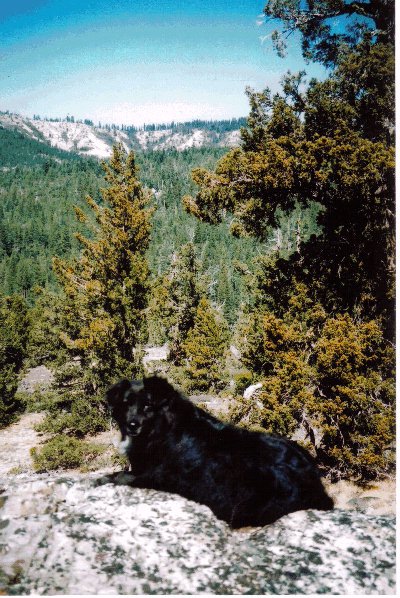|
Granite Chief Wilderness
The Granite Chief Wilderness is a 19,048 acre (77 km2) federally designated wilderness area of the Tahoe National Forest. Created by the California Wilderness Act of 1984, it is located in the Sierra Nevada mountains west of Lake Tahoe in the U.S. state of California. It is managed by the U.S. Forest Service Tahoe National Forest. Elevations range from to at the summit of Granite Chief. Events such as the Western States Endurance Run and the equestrian Western States Trail Ride, (popularly called The Tevis Cup) cross portions of the wilderness. The Pacific Crest Trail also passes through along the east edge of the wilderness. This region is extensively glaciated and has features such as hanging valleys, cirques and U-shaped valleys, but few lakes. Just outside the wilderness boundary there are two large recreation reservoirs, Hell Hole Reservoir to the south and French Meadows Reservoir to the west. The Sierra Club had maintained the Bradley Hut, which was a ski ... [...More Info...] [...Related Items...] OR: [Wikipedia] [Google] [Baidu] |
Placer County, California
Placer County ( ; Spanish for "sand deposit"), officially the County of Placer, is a county in the U.S. state of California. As of the 2020 census, the population was 404,739. The county seat is Auburn. Placer County is included in the Greater Sacramento metropolitan area. It is in both the Sacramento Valley and Sierra Nevada regions, in what is known as the Gold Country. The county stretches roughly 65 miles (105 km) from Sacramento's suburbs at Roseville to the Nevada border and the shore of Lake Tahoe. Etymology The discovery of gold in 1848 brought tens of thousands of miners from around the world during the California Gold Rush. In addition, many more thousands came to provide goods and services to the miners. On April 25, 1851, the fast-growing county was formed from parts of Sutter and Yuba Counties with Auburn as the county seat. Placer County took its name from the Spanish word for sand or gravel deposits containing gold. Miners washed away the gravel, leaving ... [...More Info...] [...Related Items...] OR: [Wikipedia] [Google] [Baidu] |

